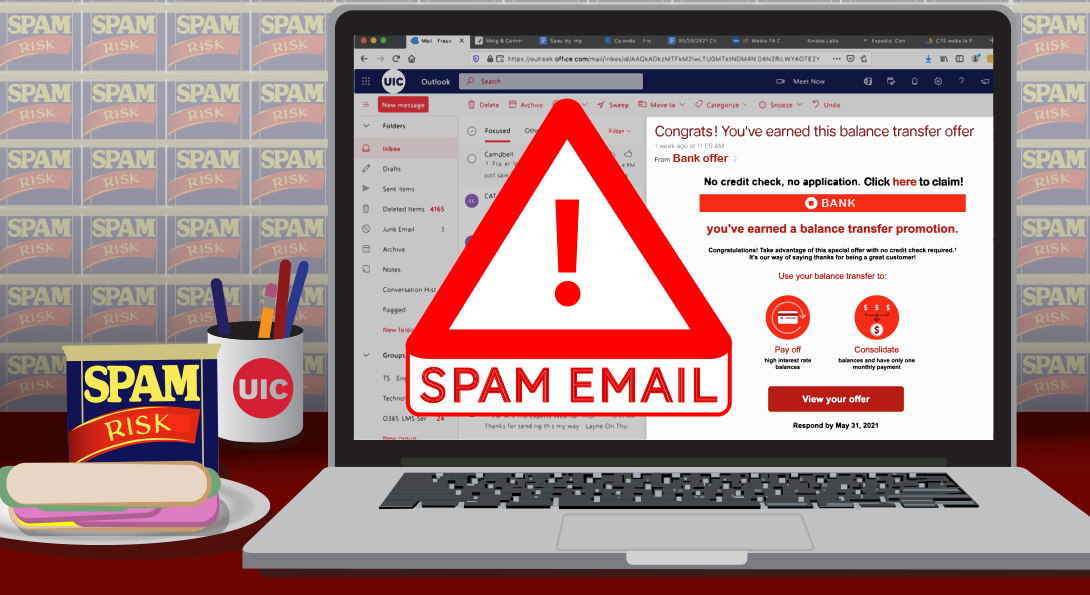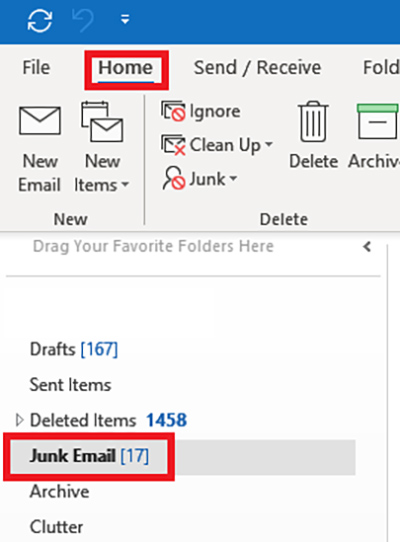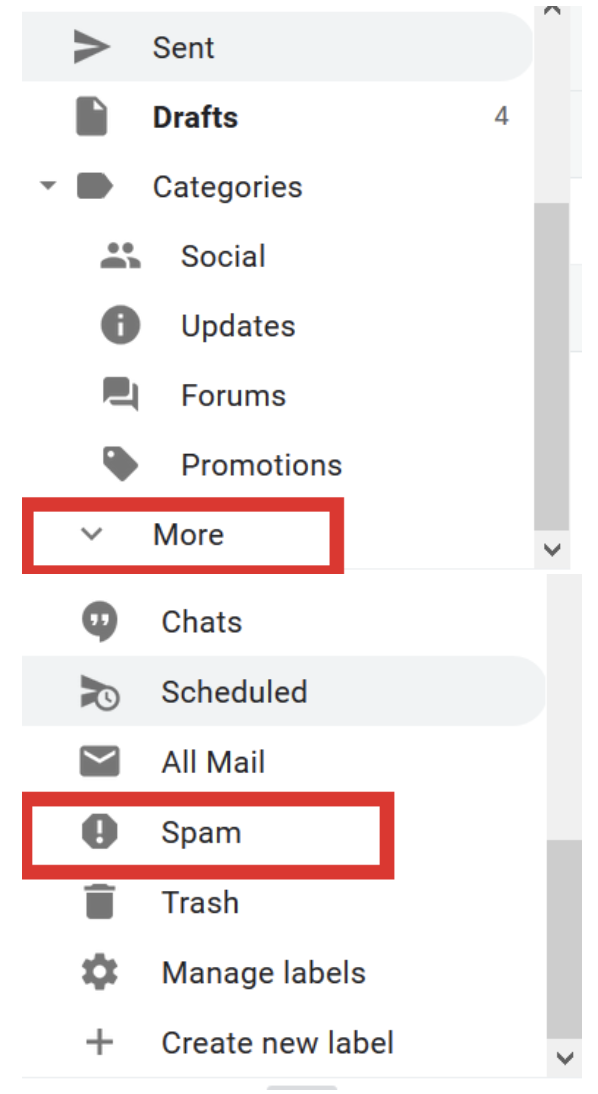New Spam Filters Help Reduce Phishing Attempts – Checking Your Spam Folder is Suggested

Introduction
With increased remote working, teaching, and learning, has also come an increase in spam and phishing attempts, including some sophisticated ones targeted specifically at UIC students, faculty and staff. It is important, now more than ever, to stay safe online.
In recent months, Technology Solutions has been working on several fronts to improve email security and better protect the UIC community from increasing cyber-threats. Effective Saturday, May 29, 2021, email routing to uic.edu will be updated to improve overall UIC email delivery security. As a result of this change, UIC email users may see more email routed to Junk Email or Spam folders.
Email that is detected to contain malware or phishing scams is discarded, while email judged to be spam will be sent to your "Junk Email" folder (in Outlook/Exchange) and "Spam" folder (in Gmail). Potential spam sent through UIC listservs will have a ***SPAM*** tag prepended to its original subject in Exchange.
While spam filters are continually updated for effectiveness, spammers also continually develop new techniques to get past those filters. You may sometimes see spam make it to your inbox, and may also find email that isn't spam in your Junk Email/Spam folder.
We suggest that you periodically check your Junk Email/Spam folder in case any messages are incorrectly marked as spam, and report any phishing attempts that do make it to your inbox.
Learn how to check your junk folder in Microsoft Outlook and Gmail.
Outlook

Sometimes legitimate emails may be marked as spam and placed in the “Junk Email” folder. It’s a good idea to regularly review messages in the Junk Email folder to check for legitimate messages that were incorrectly classified as junk.
To find your Junk Email folder:
- Open the Outlook App
- In the left pane, in your folder list, you can find the Junk Email folder
Gmail

- Log into https://mail.google.com
- Click on “Spam” along the left-hand side
NOTE: You may first need to click on “More” to see the “Spam” folder.